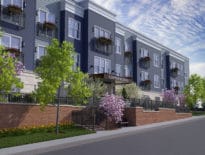
Boston-area drivers spent, on average, 164 hours caught in traffic in 2018 according to traffic data firm INRIX, equivalent to a whole month of workdays.
The near-omnipresent congestion on Massachusetts roadways has now reached a “tipping point” where access to employment is strained and meeting statewide greenhouse gas emissions targets is growing more challenging, according to a new report from the Department of Transportation.
The study, published Thursday after several delays, drew mixed reactions from transportation advocates who have long called for action to address the problem.
Addressing congestion, officials said, will require a multi-pronged approach combining improvements to public transit, construction of new housing and better planning to avoid disruptions from individual accidents or construction. The Baker administration also called for further study of so-called “managed lanes,” which add lanes of travel where drivers can opt to pay a toll to travel faster. Those changes could take three to four years to implement, Gov. Charlie Baker said.
“Congestion is a complicated problem with a complicated and interconnected set of causes,” said Transportation Secretary Stephanie Pollack at a press conference unveiling the report. “There is no silver bullet. There is no one thing the commonwealth can do that will make congestion better here. But there are a lot of things that we have to do if we take congestion seriously.”
Pollack and Baker also warned that the worsening congestion may make it difficult for Massachusetts to achieve sufficient reduction in greenhouse gas emissions. As of 2016, the most recent year for which full data is available, Massachusetts had reduced emissions by 21.4 percent from 1990 levels. A 10-year progress report projects reaching a 25.4 percent reduction by 2020 – state law requires a 25 percent reduction by that year.
“In Massachusetts, the transportation sector is both the largest and the fastest growing emitter of greenhouse gases,” the report stated. “The commonwealth cannot meet its goal of reducing overall GHG emissions 80 percent by 2050 without substantially reducing transportation sector carbon emissions.”
Massachusetts Institute of Technology system dynamics professor David Keith called the administration’s doubts about congestion pricing “a bit of a head-scratcher.”
Chris Dempsey, executive director of Transportation for Massachusetts, praised the suggestions that were included but criticized the emphasis on managed lanes over using tolls to reduce traffic.
“The governor must more aggressively confront congestion by piloting and testing smarter tolling approaches that have worked in other regions and can work here,” Dempsey said in a statement. “In the absence of implementing this essential tool, it will be challenging for the commonwealth to adequately tackle this growing crisis. The governor’s proposal to build new highway lanes won’t fix our congestion problem and it runs counter to the commonwealth’s environmental and transportation goals.”
Roadways within the Route 128 belt now see a 14-hour “peak period” stretching across the day, the report found, and traffic has gotten worse over the last five years. By 6 a.m. on a typical weekday, one in four miles of road inside Route 128 are either congested, which means travel times are 50 percent higher than a full-speed trip, or highly congested, where cars move at least twice as slow. The afternoon rush in that region starts as early as 3 p.m. and lasts until well after 6 p.m.




 |
| 

